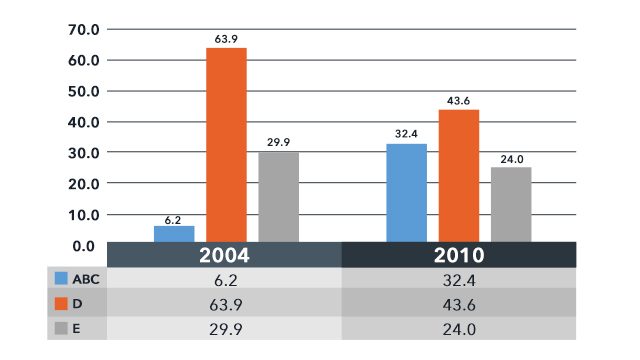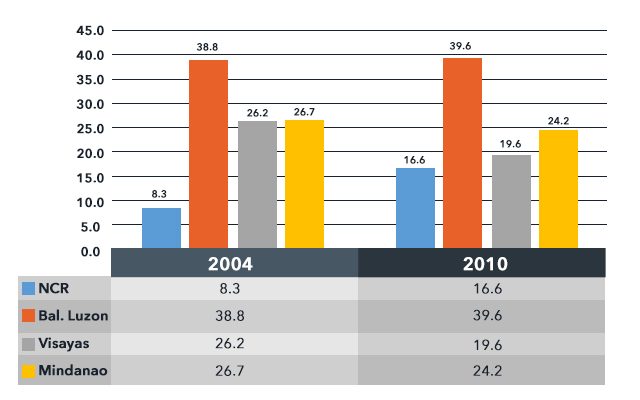SUMMARY
This is AI generated summarization, which may have errors. For context, always refer to the full article.

The answer is the same as many other vexing problems, it depends.
Analysts often say that we have a weak political party system, and that voters really make their choice based on “personality” rather than “platform.” Our system of voting for the top two executive offices in the country is the first sign of these ills.
In many countries with strong party systems, voters don’t get to mix a president and vice president from two competing parties. If you have a pick for president, you are compelled to vote for her or his running mate. In essence, voters are selecting parties, not people.
Our system is more akin to that of some Latin American countries where “split ticket” voting is allowed, that is, combining on a single ballot two candidates on competing parties. The downside is we end up with the two top positions occupied by people who were not inclined to work together in the first place.
Do Filipinos split the ticket?
In the 2004 election, only a quarter of voters (25%) voted for a tandem (SWS Exit Poll data). In 2010, this had significantly changed to over half of voters (53%). Even with the doubling of the rate of tandem voting, overall this is still not very high.
Table 1. 2004 and 2010 election tandem votes

How is it possible that the tandem of Arroyo-De Castro has a low percentage but both still won the election? This means that many people who voted for Arroyo picked a different VP to vote for, while many of those who voted for De Castro picked a different President to put on their ballot.
The Aquino-Roxas tandem of 2010 is probably the partnership to have experienced the highest level of tandem voting in Philippine history. Even the Estrada-Binay partnership enjoyed high tandem voting, higher than what is traditionally expected.
Who are more likely to vote for a tandem?
For both years, women are slightly more likely than men to vote for tandems. For both years as well, the middle “D” class is also much more likely to vote for a tandem than voters in the other socio-economic classes.
Those in Balance Luzon, for both elections, were disproportionately tandem voters compared to the rest of the country.
In 2010, urban residents were slightly more likely to vote for a tandem, but in 2004, it was widely a rural phenomenon.
Chart 1. Tandem vote by social economic class

Chart 2. Tandem vote by area

What of the 2016 tandems?
The picture for this year’s election remains vague, although this can easily be remedied with tandem-analysis by any of the survey firms that have been doing pre-election polls. To what extent are voters likely to select tandems in their vote? There is even a vice presidential candidate running without a president.
Tracking the trend of presidential and vice presidential candidates suggests that tandem voting is not likely to be as high in 2016 as in 2015, at least given polling information at this point in the election. While Duterte has been experiencing a steady rise since declaring his candidacy, Cayetano has not seen a similar rate of increase. The vice presidential debate may improve Cayetano’s numbers, gain that he would have earned through his own performance.
Poe has been gaining slowly as well, while her running mate loses ground the closer we get to May 9. Mar Roxas is the same, his numbers are stagnant while Robredo’s support swells.
You could see in the single VP debate of this election season, only two candidates repeatedly trotted out the name of his presidential running mate, Cayetano and Escudero. Many in this crop of hopefuls have their own strong agendas: Robredo for strengthening poverty eradication programs, Honasan for strengthening institutions, and Cayetano for crime prevention.
The campaign tandem vs the winning tandem
Right now you’re used to seeing Roxas with Robredo, Duterte with Cayetano, Poe with Escudero, etc. These tandems will disappear quickly from memory as soon as the next administration is installed. What will that administration look like?
Poe-Robredo? Roxas-Cayetano? Duterte-Trillianes? Binay-Escudero? Tandems such as these are difficult to imagine, but they could be a reality, for better or worse.
In the interest of getting the best outcome for the country, even if as voters we don’t pick tandems created by political parties, we should pick two individuals who can work together. Otherwise, the Vice President becomes a wasted, powerless asset whose primary mandate is to get elected President in 2022. – Rappler.com
Notes: 2004 and 2010 exit poll data were collected by Social Weather Stations, Inc. Exit polls reflect voter-respondents’ choices of candidates after they have cast their votes.
Ma. Rosel S. San Pascual is the Chair of the Department of Communication Research of the UP College of Mass Communication.
Clarissa C. David is a Professor at the UP College of Mass Communication and a fellow of Social Weather Stations, Inc.
Add a comment
How does this make you feel?
There are no comments yet. Add your comment to start the conversation.